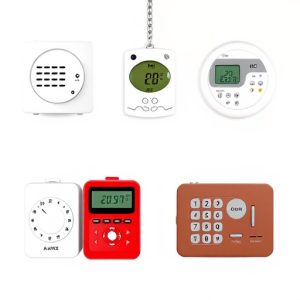Personal Distress Signals: Tracking Technology Meets Custom Alarms
Personal attack alarms require a personalized approach, considering sound range (2000-5000 Hz for op…….
Personal attack alarms require a personalized approach, considering sound range (2000-5000 Hz for optimal audibility), intensity, and unique patterns for effective distress signaling. Balancing these factors ensures users receive appropriate warnings without unnecessary panic. Integration of GPS tracking technology enhances response times in emergency situations, but must respect user privacy through robust data encryption, secure storage, and user control over signal dissemination to prevent misuse or invasion of privacy.
Personal distress signals equipped with tracking capabilities are transforming personal safety. With customizable alarms, individuals can set specific sounds within a defined range to alert others during emergencies. This article explores the importance of understanding personal distress signals and their evolving role in enhancing safety. We delve into designing effective attack alarm sounds, integrating tracking technology for location data, and addressing ethical considerations regarding user privacy.
- Understanding Personal Distress Signals: The Need for Customized Alarms
- Designing Effective Attack Alarm Sounds: Frequency and Intensity
- Tracking Technology Integration: Enhancing Safety with Location Data
- Ethical Considerations and User Privacy in Distress Signal Devices
Understanding Personal Distress Signals: The Need for Customized Alarms
Personal distress signals are unique to each individual, reflecting their specific triggers and needs in moments of crisis. Understanding these signals is paramount when designing solutions like personal attack alarms. What works for one person might not be effective for another, making it crucial to tailor these devices to individual requirements.
Customized alarms can take into account factors such as sound range, intensity, and unique patterns or vibrations that resonate with the user in stressful situations. For instance, a Personal Attack Alarm Sound Range could vary based on proximity—loud, piercing sounds for immediate danger and subtle alerts for potential threats, ensuring individuals receive appropriate warnings without causing panic in safe environments.
Designing Effective Attack Alarm Sounds: Frequency and Intensity
When designing effective personal attack alarm sounds, frequency and intensity play crucial roles in ensuring immediate and impactful responses from users. The sound range should fall within a specific spectrum to capture attention without causing discomfort or distraction in daily environments. Typically, alarm sounds in the 2000-5000 Hz range are recommended as they are easily audible to most individuals, including those with some degree of hearing impairment.
Within this range, higher frequencies (closer to 5000 Hz) can deliver more piercing and urgent tones, effectively jolting the listener out of their current state. Conversely, lower frequencies (around 2000-3000 Hz) offer a deeper, more resonant sound that still commands attention but with slightly less intensity. Balancing frequency with intensity is essential to create an alarm sound that’s both effective and user-friendly, especially when designed for personal distress signals that need to be heard in various settings.
Tracking Technology Integration: Enhancing Safety with Location Data
The integration of tracking technology into personal distress signals has revolutionized safety measures, especially in emergencies. Devices now go beyond emitting a simple alarm sound; they leverage location data to enhance response times and effectiveness. When an individual activates their Personal Attack Alarm, advanced GPS features pinpoint their precise location, transmitting this critical information to emergency services immediately. This real-time tracking capability ensures that help can arrive promptly, even in remote areas or complex situations where verbal communication might be difficult.
The range of these alarms is another significant aspect, designed to cover personal safety spaces effectively. From bustling urban streets to quiet suburban neighborhoods, the sound and signal strength cater to diverse environments. This technology empowers individuals to protect themselves discreetly, knowing that their location data can provide essential context during distress situations, potentially saving lives.
Ethical Considerations and User Privacy in Distress Signal Devices
In developing and deploying personal distress signal devices with tracking capabilities, it’s crucial to navigate a complex landscape of ethical considerations and user privacy concerns. These small yet powerful tools, designed to emit a Personal Attack Alarm Sound within a specific Range, offer immense potential for personal safety. However, their effectiveness hinges on balancing the benefits against potential misuse and invasion of privacy.
User data privacy is paramount. Distress signal devices may collect sensitive information, such as location data and alarm activation times, which could be misused without explicit consent. It’s essential to ensure robust data encryption and secure storage methods. Moreover, users should have control over their data access, able to choose who receives their personal distress signals and location updates. Ethical guidelines must be established to safeguard individuals from unauthorized tracking and potential stalking or harassment.
Personal distress signals equipped with tracking capabilities represent a significant advancement in personal safety. By understanding the unique needs of individuals, designing effective alarm sounds tailored to specific situations, integrating tracking technology, and addressing ethical considerations, these devices can revolutionize how we navigate our personal security. The combination of customized alarms within a defined sound range and real-time location data offers unprecedented peace of mind. As this technology evolves, it’s crucial to prioritize user privacy, ensuring that the benefits of enhanced safety do not come at the cost of individual liberties.

